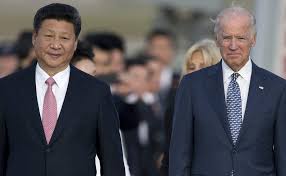The United States stands at a critical juncture in its foreign policy, particularly concerning the Indo-Pacific region. After the rise of Chinese power during the 2010s and the shortcomings of previous U.S. policies, there is a pressing need to renew the Pivot to Asia. Placing the region at the center of America’s grand strategy is essential. How can the United States achieve this effectively? Let’s explore.
Introduction
The Indo-Pacific region has emerged as a central arena of global geopolitical competition. With China’s growing influence, the United States must reassess and re-strategize its approach to maintain a balance of power. The pivot to Asia, first articulated during the Obama administration, requires revitalization and a comprehensive strategy to address contemporary challenges and opportunities.
Understanding the Pivot to Asia
What Is the Pivot to Asia?
The Pivot to Asia, also known as the Rebalance to Asia, was a strategic shift in U.S. foreign policy aiming to enhance American engagement with the Asia-Pacific region. This involved strengthening economic ties, expanding military presence, and deepening diplomatic relations.
Why Is It Important Now?
The rise of China as a global power and its assertive actions in the South China Sea, alongside economic initiatives like the Belt and Road Initiative, have heightened the strategic significance of the Indo-Pacific region. Renewing the pivot is crucial for the U.S. to safeguard its interests and uphold regional stability.
Learning from Past Mistakes
Assessing Previous Policies
The initial pivot to Asia had mixed results. While it succeeded in reinforcing alliances, it failed to fully counterbalance China’s influence. There were gaps in implementation and a lack of sustained focus.
Identifying Key Shortcomings
- Inconsistent Commitment: Shifting priorities and inconsistent policies undermined long-term goals.
- Economic Engagement: The Trans-Pacific Partnership (TPP) withdrawal left a vacuum in economic leadership.
- Military Presence: While military presence increased, it was often reactive rather than proactive.
Strategic Priorities for the Renewed Pivot
Strengthening Alliances
Reinvigorating alliances with Japan, South Korea, Australia, and other regional partners is fundamental. These alliances form the backbone of U.S. strategic presence in the region.
Enhancing Economic Ties
Re-entering or negotiating new trade agreements similar to the TPP can enhance economic influence. Building economic partnerships that benefit both the U.S. and regional economies is key.
Expanding Military Capabilities
A robust and proactive military strategy is necessary. This includes maintaining a forward-deployed presence, conducting regular joint exercises, and enhancing defense cooperation with allies.
Promoting Democratic Values
Supporting democratic institutions and human rights in the region aligns with U.S. values and counters authoritarian influences. This can be achieved through diplomatic efforts and aid programs.
Economic Dimensions of the Pivot
Re-engaging with Trade Agreements
Reconsidering participation in regional trade agreements can strengthen economic ties. This also counters China’s economic clout in the region.
Investing in Regional Economies
U.S. investments in infrastructure and technology within the region can foster goodwill and economic dependency, aligning regional growth with American interests.
Leveraging Technology and Innovation
Promoting technological collaboration and innovation can position the U.S. as a leader in the digital economy, providing a counterbalance to China’s tech advancements.
Military Strategy and Presence
Forward-Deployed Forces
Maintaining a forward-deployed military presence deters aggression and reassures allies of U.S. commitment to regional security.
Joint Military Exercises
Regular joint exercises with regional allies enhance interoperability and readiness, showcasing a united front against potential threats.
Defense Technology Sharing
Sharing advanced defense technologies with allies can bolster their capabilities, creating a more formidable collective defense posture.
Diplomatic Engagement and Soft Power
Strengthening Diplomatic Ties
Active diplomatic engagement through regular high-level visits, dialogues, and participation in regional forums strengthens U.S. influence and resolves disputes amicably.
Cultural Diplomacy
Cultural exchange programs, educational scholarships, and people-to-people ties foster mutual understanding and goodwill.
Humanitarian Aid and Development Assistance
Providing humanitarian aid and development assistance to countries in need enhances the U.S.’s image and influence in the region.
Addressing China’s Influence
Balancing Power
A balanced approach involves countering China’s influence without escalating tensions. Strategic patience and calculated responses are crucial.
Engaging China
Constructive engagement with China on common issues like climate change, trade, and global health can mitigate risks and open avenues for cooperation.
Countering Coercion
Supporting countries facing economic or military coercion from China ensures regional stability and reinforces U.S. commitment to a rules-based order.
Technological and Cyber Dimensions
Cybersecurity
Strengthening cybersecurity collaboration with regional allies protects critical infrastructure and counters cyber threats.
Technological Leadership
Investing in research and development within the region can position the U.S. as a leader in emerging technologies, creating dependencies that favor American interests.
Digital Diplomacy
Promoting digital literacy and access in the region through initiatives and partnerships can build a foundation for sustained influence.
Environmental and Climate Initiatives
Regional Climate Partnerships
Collaborating on climate initiatives with regional partners addresses a common existential threat and strengthens diplomatic ties.
Sustainable Development
Promoting sustainable development practices aligns with global climate goals and fosters long-term regional stability.
Green Technology Investments
Investing in green technologies within the region can drive economic growth while addressing environmental challenges.
Renewing the Pivot to Asia is not just a strategic necessity but an opportunity for the United States to reinforce its leadership in a dynamically evolving region. By learning from past mistakes and adopting a multifaceted approach that includes economic, military, diplomatic, and technological strategies, the U.S. can effectively navigate the complexities of the Indo-Pacific landscape. The future of regional and global stability hinges on how well the United States executes this pivotal strategy.




